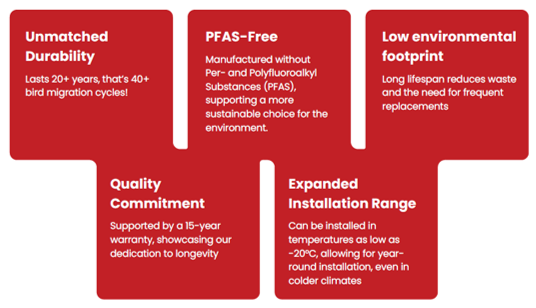A week ago, I heard a thunk against a window in our apartment. A warbler had collided with the glass. Fortunately, the little fellow ended up landing in a flower pot where he sat for a long time before finally taking off. He was a lucky one.
When my wife and I lived in midtown Toronto, the nearby glass towers were often the scene of bird carnage during migration seasons. On my morning dog walks in the spring and fall, my Miniature Red Poodle, Maya, and I would encounter stricken birds that were still alive after window collisions but temporarily incapacitated or seriously injured. We also ran across numerous birds that had died from these overnight strikes.
Why do birds fly into windows? The simple answer is that they don’t see the window glass and do not recognize it as being as solid as a wall. Worse, windows cast reflections that make them look like the sky or a nearby tree. In other words, for the bird, the appearance is a flyable space and a place to alight. Then there are times when a bird sees through a window where a visible house plant is in its view, and it thinks it is a landing place when it is not.
The worst carnage comes during the migration seasons in spring and fall, and especially overnight when building lighting causes birds to become disoriented, leading to millions of collisions. For many years, Toronto buildings have reduced overnight lighting during peak migration periods and yet, the birds keep dying.
How many window collision deaths occur each year? In Canada, the estimates range from 16 to 42 million. In the United States, the numbers range from 1.28 to 3.46 billion based on recent data from research headed up by Professor Daniel Klem, Director of the Acopian Center for Ornithology at Muhlenberg College in Pennsylvania.
Window collision deaths surpass the challenges faced by birds from power lines, communication towers and motor vehicles. The collisions usually kill a bird instantly because of the speed of impact. Some birds, however, survive like the one that recently hit our balcony window. The bird may appear to be all right after a few minutes, but it could also experience brain damage, concussions, or unspecified internal injuries. A bird that survives a window collision can also be subject to predation as it lies helplessly on the ground. When you take into consideration post-collision casualties of window strikes, even the 3.46 billion number may be low.
The simplest mitigation strategy is to make windows visible. Putting stickers or removable decals on windows makes them more visible to birds. Reducing lighting at night, especially during migration seasons, is another.
A press release arrived in my email inbox this week from a company called Feather Friendly. This Mississauga, Ontario-based business is focused on treating glass to make it bird-collision safe. Started in 2006, Feather Friendly produces products that have the approval of the American Bird Conservancy, Flap Canada, SAFE (Saving Animals From Extinction) and the Audubon Society. Products range from appliques and tapes for do-it-yourself home owners to medium and large-scale solutions for retrofits and new builds. The picture appearing at the top of this posting is from the McCormick Place, a Chicago skyscraper.
The reason for the press release was the announcement of Feather Friendly Evolution™, a new material to treat glass for bird-collision deterrence. The key features are described below:
 Paul Groleau, the Vice President of Feather Friendly, stated in the release: “Feather Friendly Evolution is the inevitable result of our ‘birds-first’ approach to innovation. We’re not just putting out another product—we see ourselves as an essential part of the larger effort to help nature thrive alongside human development. With Feather Friendly Evolution™, we’ve created a material that reflects that responsibility: long-lasting, environment friendly, and built to protect not just the current generation of birds, but many more to follow.”
Paul Groleau, the Vice President of Feather Friendly, stated in the release: “Feather Friendly Evolution is the inevitable result of our ‘birds-first’ approach to innovation. We’re not just putting out another product—we see ourselves as an essential part of the larger effort to help nature thrive alongside human development. With Feather Friendly Evolution™, we’ve created a material that reflects that responsibility: long-lasting, environment friendly, and built to protect not just the current generation of birds, but many more to follow.”









